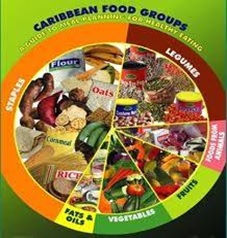
Caribbean Food Groups
The best way to regulate your intake is to count the carbohydrates.
Understanding Carbohydrates
The best way to regulate your carbohydrate intake is to “count the carbohydrates” in your food. Carbohydrates are counted in grams – and even a few grams more or less can make a difference in your blood sugar reading.

Sodium
About Sodium (Salt)
Sodium is an essential dietary component, but if you are probably getting way more sodium than your body needs or that is good for your heart. In some people, sodium increases blood pressure because it holds excess fluid in the body, creating an added burden to your heart.
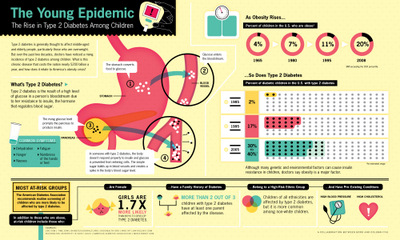
Diabetes Infographics
Here are a few facts and figures about diabetes. These statistics give a sense of the global scale of the problem that we are dealing with today. Check out the numbers by following the link below.
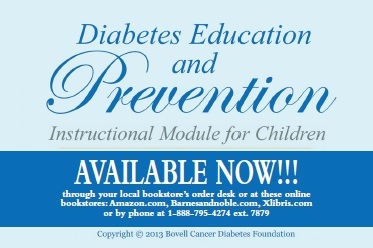
Diabetes Education Workbook
BCDF Diabetes Workbook - A Child's Bookshelf
In Trinidad and Tobago diabetes is the second leading cause of death. There is compelling clinical proof that most diabetes cases can be prevented by improving diets and increasing physical activity. If the burden of diabetes in T&T is to be effectively addressed, there is an urgent need to raise the level of knowledge regarding prevention and self-management among children and other community members in Tobago.
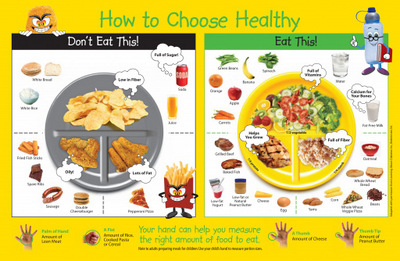
Plate Planner
Plate Planner
Have you ever wondered how much is too much? Here is an easy to follow guide to find the appropriate portion size of each food group for your meals. Make sure you know how much of everything you should be eating!
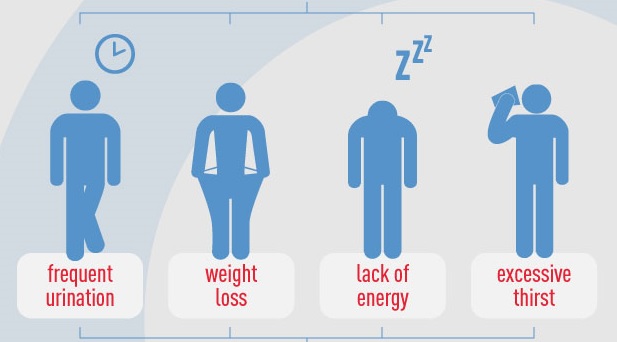
World Diabetes Day Infographics
A selection of infographics explaining diabetes, its signs and symptoms, risk factors and how to reduce your risk of type 2 diabetes. Courtesy the IDF.

Diabetes Education
Colouring Book
Children's Colouring Book
The BCDF has made two free children's colouring books available for download. Check out the educational section of our website using the link below to download your free copies.
Diabetes Education Made simple: Fruits, Serving and Portion Sizes
Although fruit is an excellent snack which provides vitamins, minerals and extra fluid, it is still is considered a carbohydrate and must be counted in your daily allowance. Generally, you are allowed between 2 - 4 servings of carbohydrate per meal. It depends on your weight, activity level and blood sugar control. Usually 2 - 3 servings of fruit a day are considered reasonable.
Naturally White Foods vs Refined White Foods
According to the American Heart Association, low fiber diets increase risk of heart disease, the leading cause of complication and death in diabetes. White refined foods increase insulin resistance, which is a precursor to, as well as a component of type 2 diabetes (T2D). When we consider eating typical white refined foods such as white bread and white flour products, white rice or white sugar products, we should think about keeping them to a minimum for several reasons.
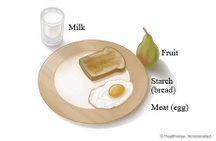
Sample Breakfast Plate
Courtesy Healthwise, Inc.
A 9" Plate as a Tool for Estimating Carbohydrate
The standard breakfast in a plate format includes: Quarter (1/4) plate bread, grain, or starchy food. Starchy foods include bread, yam, rice, Crix, and other cooked grains; cereal; dasheen; and starchy vegetables, such as sweet potatoes, corn and legumes (cooked dry beans, dry peas and lentils). An 8 oz glass of skim or low-fat milk. If you do not like or cannot drink milk, substitute 8 oz of unsweetened (or artificially sweetened) fat-free or low-fat yogurt or calcium-fortified soy milk. A serving of fruit. This can be a medium fresh fruit, 1/2 cup cooked or canned fruit, 1/2 cup fruit juice, or 1/4 cup dried fruit.
 BCDF
BCDF
 Twitter
Twitter Facebook
Facebook